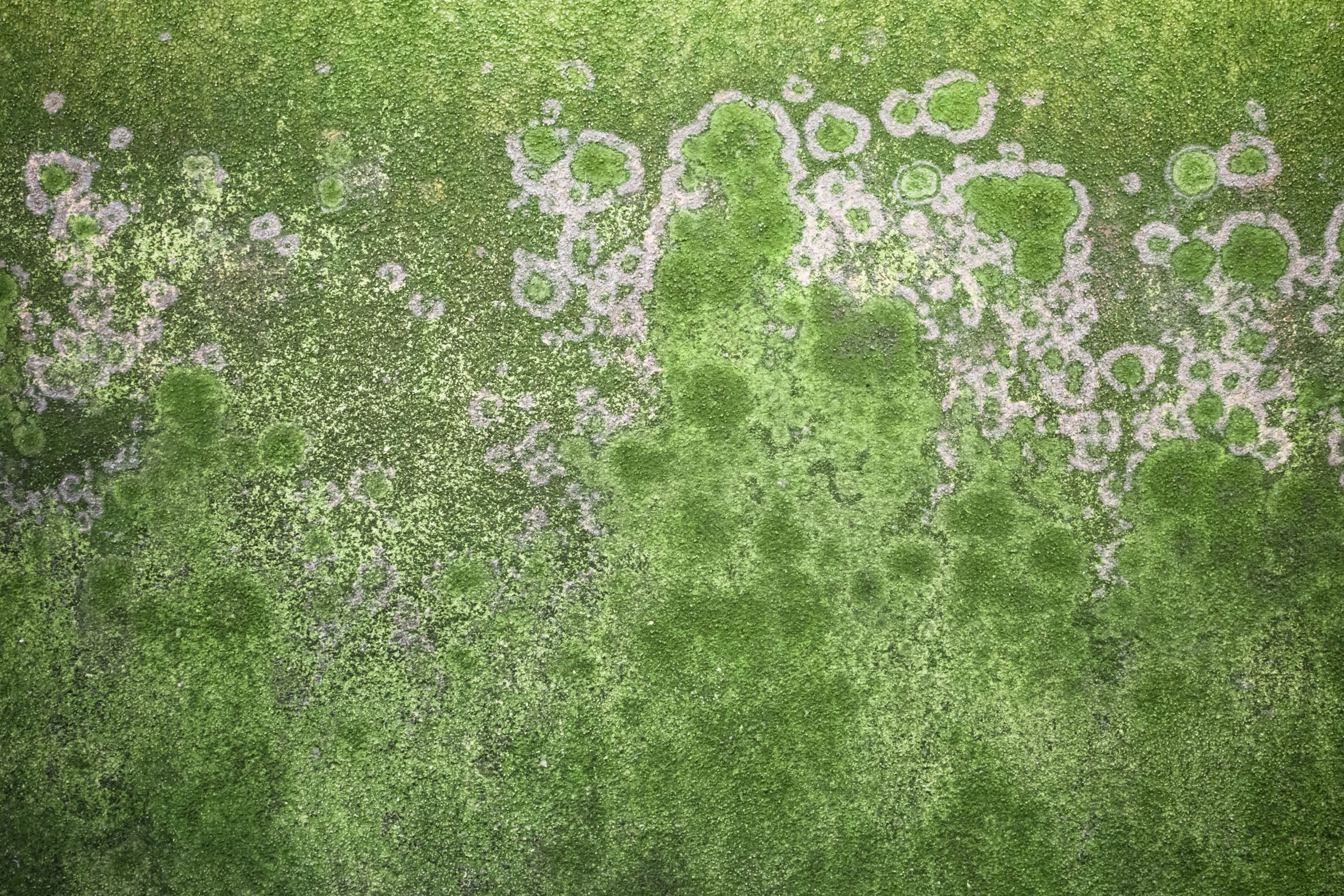
Millions of Americans are living and working in toxic environments. In the second part of this two-part series, the Emerald investigates the prevalent, and severely under-diagnosed set of environmentally acquired illness caused by exposure to toxic fungi, and why sufferers are turning to alternatives. Read the first part here.
“It was Traumatic”
Kelly Desmore’s had just moved into a newly remodeled house right before she began experiencing the initial symptoms of toxic mold poisoning.
That year, she remembers, “there were unusually heavy rains [in Chico],” and aspects of the building she was living in did not properly dry.
It was only after her diagnosis that she discovered mold in her home. Since then, she says, her life dramatically changed.
She’s experienced depression in addition to skin, memory, sinus and digestive issues. Her menstrual cycle became unbearable. She also developed hypersensitivity—orally, visually, physically—and rage, she explains. “It ruined my life, my relationship.”

Mold poisoning is a spectrum, she says, “I’m on the extreme end.”
For three years, Desmore was bedridden, she explains. “The pain levels were indescribable. I couldn’t sleep, eat, or walk […].”
The hormonal imbalances, and mood swings were like “manopause to the extreme,” she adds. “That was almost harder than anything else. It was traumatic.”
Desmore lost her ability to have children, her job, her home, and many of her possessions. She says that, like survivors of the Camp Fire are experiencing, she had to start over.
Many moldies—a term Desmore and others use to describe sufferers of the illness—have to start over from scratch, leaving their home and belongings behind as items like clothing and furniture can carry to mycotoxins, therefore inhibiting a full recovery.
However, the worst part about the experience, Desmore says, was not being believed.
Misunderstood and Under-Diagnosed
Mycotoxins are well understood by scientists. However, environmentally acquired illnesses—like those caused by excessive indoor dampness—are not.
In fact, there’s no official record of just how many suffer from these illnesses, or fungal infections.
But, based on WHO estimates and U.S. Census Bureau information, it’s safe to say millions of Americans are affected.
For example, the WHO finds that between 10%-50% of buildings in affluent countries have microbial pollution. Rates are much higher in developing nations, and in low income populations.
In the U.S., there are more than 138 million housing units. Each unit has an average of 2.6 inhabitants.
That means that, at the very least, 13.8 million (10%) households nationwide—and their 35 million inhabitants—are currently exposed to toxic indoor conditions.
Despite this, doctors aren’t looking for such environmental illnesses, explains Dr. Hope. “And [physicians] can’t diagnose something they don’t consider.”
Keeping Doctors in the Dark
Historically, information available to doctors was intentionally misleading, or attacked. That caused confusion, and doubt among medical professionals.
For example, Hope says, “a lot of patients told their doctor what was going on, and were challenged.”
Lawsuits are a major incentive to keep doctors in the dark. “The reality is that there’s motivation and incentive to keep doctors from getting properly educated on this,” she says. “It’s a very, very expensive problem [to address]—for homeowners, for employers, for insurance companies.”
She continues, “Wishing it away isn’t going to change the problem. Ignoring it, covering it up, or distracting from it—none of those things work for a person’s health.”
Just an Allergy?
Mold toxicity is commonly downplayed in seriousness, or misunderstood as an allergy.
Allergies involve our immune system’s interaction to outside agents—like mold spores, or dust and dust mites, which are commonly found in water damaged buildings.
However, unlike allergens—mycotoxins cause direct injury to cells.
Water damaged conditions can make you sick a lot more ways than an allergy. For awhile, however, it was the only thing acknowledged, says Dr. Hope.
Though that’s starting to change—effects of toxigenic molds are still minimized by health organizations like the CDC.
The CDC’s Basic Facts on Mold and Dampness acknowledges the prevalence of fungal infections, but stops just shy of recognizing the seriousness of exposure. For example:
“Exposure to damp and moldy environments may cause a variety of health effects, or none at all. Some people are sensitive to molds. For these people, exposure to molds can lead to symptoms such as stuffy nose, wheezing, and red or itchy eyes, or skin. Some people, such as those with allergies to molds or with asthma, may have more intense reactions. “
—CDC, Basic Facts on Mold and Dampness
The CDC cites severe reactions as, “fever and shortness of breath.” However, they fail to attribute other adverse health effects, such as hemorrhaging, memory loss, lethargy—or cancer—to toxic mold.
Contrary to the CDC’s position, several existing studies show mycotoxins’ more serious, long term effects.
As J. W. Bennett, and M. Klich, authors of Mycotoxins, explain, “There’s vast literature on mycotoxins.”
The major mycotoxin, aflatoxin, for instance, is extensively studied, and known as one of the most potent natural carcinogens, according to Klich and Bennett.
“The International Agency for Research on Cancer has classified aflatoxin B1 as a group I carcinogen,” they wrote. “There’s no other natural product for which the data on human carcinogenicity are so compelling.”
Detoxing From Toxic Environments
For Kelly Desmore, the recovery process has been decades-long. It’s a battle she’s still waging.
“You can spend one year in a house with toxic mold, and five years recovering from it,” she explains.
Avoidance is the most critical factor; and why the first step toward recovery is to get away from the source of exposure.
As Dr. Hope puts it, “No more can we heal a burn while someone stands in a fire, than we can detox a patient while they are taking in more toxins.”
That’s a struggle because most patients experience a degree of depression, lethargy and anxiety.
“One of my patients called it the mold spell,” says Hope. “It kept her in the building until she finally found her way out.”
In some ways, it serves to keep people in environments that are problematic for them, explains Hope. “They lack motivation and energy to take action.”
Beyond avoidance, there are few ways to support recovery. Those include use of therapies— such as glutathione or binders like activated charcoal—which help the body excrete toxins. Sweating and exercise is integral to the detox, or excretion process.
Additionally, treatment usually involves dietary changes, or taking supplements, as exposure to toxins often leads to nutritional deficiencies.
Turning to Alternatives
Desmore visited her doctor nine times before she received a diagnosis.
Dr. Hope was hospitalized twice. She had eight organs biopsied.
Neither of their experiences are exceptional. Many patients report similar stories of mystery, misdiagnosis, and failed treatments. Others are told there’s no such thing as mold illness.
As a result, people get sicker for months, or years.
Due to a lack of confidence in the medical system, and a lack of treatments that specifically treat mold illness, many moldies are turning to alternative treatments—including cannabis.
Several of Hope’s patients use cannabis based products with much success.
CBD oil in particular is beneficial for her patients, she explains, primarily due it it’s anti-inflammatory, and anti anxiety properties.
Dr. Hope believes there’s a role for medical cannabis.
In the meantime, she emphasizes use of high quality products without mycotoxins, fungicides or pesticides. Otherwise, it can make the situation worse.
For instance, Hope explains, “I had one patient—the plastics from his vape pen melted, and caused problems.”
Clean Cannabis
Contaminants like heavy metals are a major concern for cannabis consumers, and state regulators.
In 2017, a University of California, Davis, study found evidence of mold and bacterial contamination in 20 samples collected from Northern California dispensaries.
Currently, all products sold from licensed retailers in legal states must undergo testing by a series of labs, reports Leafly. “Lab tests primarily screen for potency and levels of THC and CBD, residual pesticides, unwanted contaminants, and the presence of mycotoxins like mold and mildew.”
State standards vary. Now three years into legalization California regulators have developed some of the strictest testing standards in the nation—allowing for some of the cleanest cannabis on earth.
For example, the California Bureau of Cannabis Control (BCC), “requires all cannabis to be tested for cannabinoids, terpene content, mycotoxins and heavy metals in addition to moisture content, residual solvents, pesticides and microbial impurities,” finds the Cannabis Testing Regulations: A State-by-State Guide by Leafly.

Cannabinoid-Induced Healing
Desmore emphasizes the use of high quality, clean cannabis products. “If you take in the wrong pot, talk about problems—you will end up in ER […],” she says, citing personal experience with tainted herb.
Now, she uses only 100% organic cannabis oil. Her daily regimen includes topicals, and ingesting oils orally with things like green tea.
She was first introduced to cannabis as a treatment for toxic mold illness more than 15 years ago after a friend gifted her a jar of oil.
“I started to heal immediately,” she says. “For the first time in three years, I got up, walked down to my office, and worked for 4-6 hours.”
“My eyes were white for the first time [in awhile]. My tongue was clean, and my throat was no longer inflamed,” she explains. “That’s a big revelation for any human. I will never forget that woman, just handing it to me—it changed my life.”
Desmore continues, “I know for sure I wouldn’t be here if I didn’t use this oil.”



It would have been a good article had you interviewed someone that truly suffers from Toxic Mold and has medical records to verify their condition.
High Hannah! We sure did! We interviewed a reader just like you (that’s where we got the topic from)! Did you catch PART 1 of this story?
I just read your articles 1 and 2 and I’m still crying! I’ve been sick since 2007 from toxic mold
Toxic Mold ad Chronic Pain patient. Would love a good recommendation of clean oils.
Can you give information on which oils are best for Mold Toxicity. I’m suffering and I need all the help I can get.
Hi Darlene, thank you for reaching out! I am not a medical expert, but my exploration and interview with sources for this series on Toxic Mold Illness suggests that its important that sufferers interested in cannabis or CBD look for lab-tested products that are free of pesticides, molds, and other toxins.
I have black mold in my apt, have been very, very sick, don’t have money to move,what can I take
Been very ill from black mold in my home for 9 months don’t have money to fix and it’s my mom’s home and she won’t take it seriously . And help what to take to feel any better. I feel like I am dying
This article gave me so much confidence 😭 i stayed in a vacay home for a week that ended up having mold. Since i started feeling the effects, ive been taking part in cannabis consumption as that was the only natural thing i found to take away all the pain from mold detoxification. I started to do research to see if there was an actual science behind it. And wow….i think this article was all i needed. I honestly chose not to take doctors advice as well because it gave me a weird feeling (i trust my gut very strongly) and because of lack of trust. You’re a god send. God bless your soul. I wish all and every moldie a blessed recovery and that it goes as smooth as possible because its truly Hell.